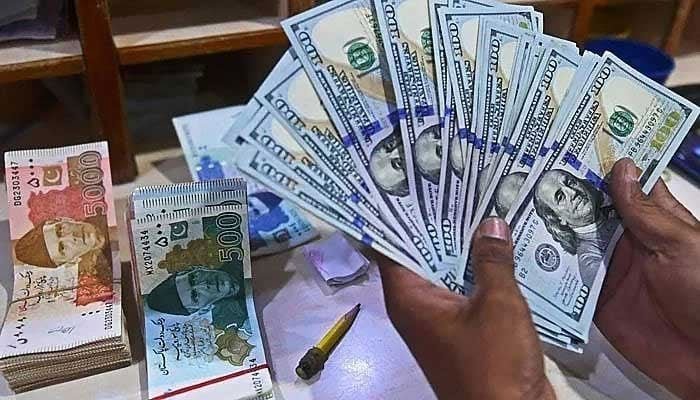- Country’s ability to generate dollar loans shrank to normal: official.
- Loans disbursement remained low in last 2 months.
- Pakistan secured $3.52bn in July-September period.
The local currency has started depreciating against the US dollar as Pakistan received low dollar inflows in the shape of loans during the consecutive second month of September 2023, The News reported on Thursday.
In the first month, July 2023, Pakistan received $2.89 billion as reported by the Economic Affairs Division (EAD) but, if a disbursed loan of $1.1 billion by the IMF under the $3 billion Standby Arrangement (SBA) is included, the total disbursement touches the $4 billion mark.
“The country’s ability to generate dollar loans have shrunk to normal in the last two months, August and September, in which the disbursement of loans remained at $316 million and $320 million respectively,” sources confirmed to The News on Wednesday.
The military establishment, in consultation with intelligence agencies and law-enforcement agencies, launched a crackdown on moneychangers and speculators and the rupee-dollar parity improved substantially, but there was a limit to taking such administrative measures.
The economic managers failed to complement these administrative steps to ensure dollar inflows and after witnessing shrinking inflows, the administrative measures lost charm. So the rupee is depreciating against the US dollar again.
The dollar inflows in July 2023 witnessed a massive boost when after securing $1.1 billion from the IMF under the $3 billion SBA programme, Pakistan also obtained $2 billion in additional deposits from the Kingdom of Saudi Arabia. The government also secured guaranteed loans of $508.34 million for induction of fighter aircraft.
So far in the first quarter, July-September period, Pakistan secured $3.52 billion from all multilateral and bilateral creditors in the current fiscal year against $2.234 billion in the same period of the last financial year. The EAD had included disbursement of $1.16 billion from the IMF as part of its disbursement showed in July 2022, but the amount released by the IMF in July 2023 was not made part of the EAD-released foreign loans.
The multilateral creditors disbursed $490.48 million during the first quarter of the current fiscal year as the ADB provided $61.7 million and Asian Infrastructure Investment Bank (AIIB) $22.96 million. The EU and European Investment Bank (EIB) have not disbursed any amount so far in the current fiscal year.
The World Bank’s IDA lending stands at $240.93 million in the first quarter of the current fiscal year, while IBRD funding is hovering around $58.45 million in the same period of the current fiscal year. The Islamic Development Bank (IsDB) has so far disbursed $100 million for short-term goals in the current fiscal year.
Total disbursement from bilateral creditors stood at $324.05 million during the first quarter, July-September period of the current fiscal year, out of which the Kingdom of Saudi Arabia clinched the top position by making disbursement of $300 million loan in the shape of an oil facility on deferred payment.
China has disbursed just $0.39 million in the first quarter, $1.28 million by France, $0.77 million by Germany, $2.82 million by Japan, $4.85 million by Korea and $13.98 million by USA.
Through the Naya Pakistan Certificate, Pakistan has received $204.5 million in the first quarter of the current fiscal year. Pakistan also received a $2bn deposit from the KSA in the first three months of the current fiscal year. The government has so far remained unable to get any single penny through commercial loans despite making a projection of $4.5 billion and the same applies in the case of generating dollars through international bonds.
The government has sought $17.6 billion in the shape of foreign loans for the whole financial year.
Now Islamabad would have to secure $14.1 billion in the remaining three quarters (Oct to June) to materialise the desired target to keep the foreign exchange reserves at comfortable levels. Otherwise, the balance-of-payment crisis might erupt anytime in case of derailment of the IMF programme.

 Latest News8 hours ago
Latest News8 hours ago
 Latest News8 hours ago
Latest News8 hours ago
 Latest News8 hours ago
Latest News8 hours ago
 Latest News8 hours ago
Latest News8 hours ago
 Latest News8 hours ago
Latest News8 hours ago
 Latest News8 hours ago
Latest News8 hours ago
 Latest News8 hours ago
Latest News8 hours ago
 Latest News8 hours ago
Latest News8 hours ago























